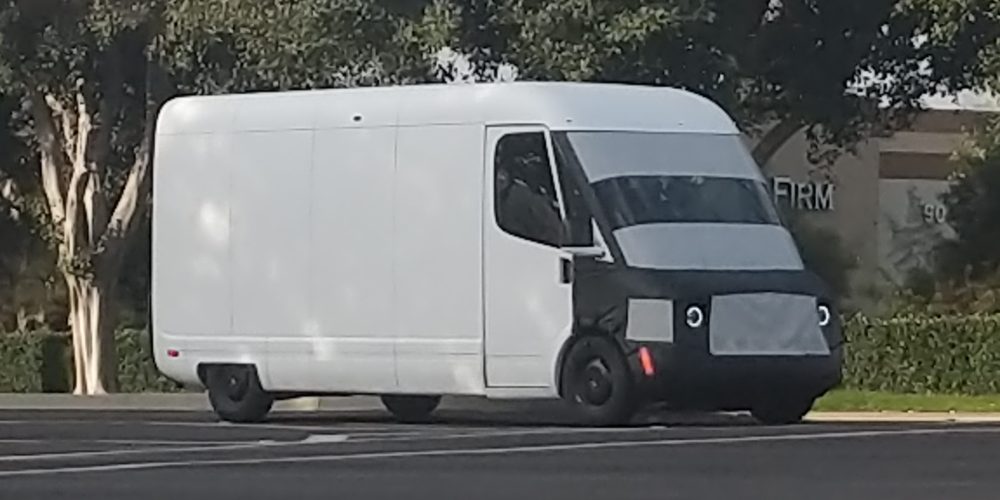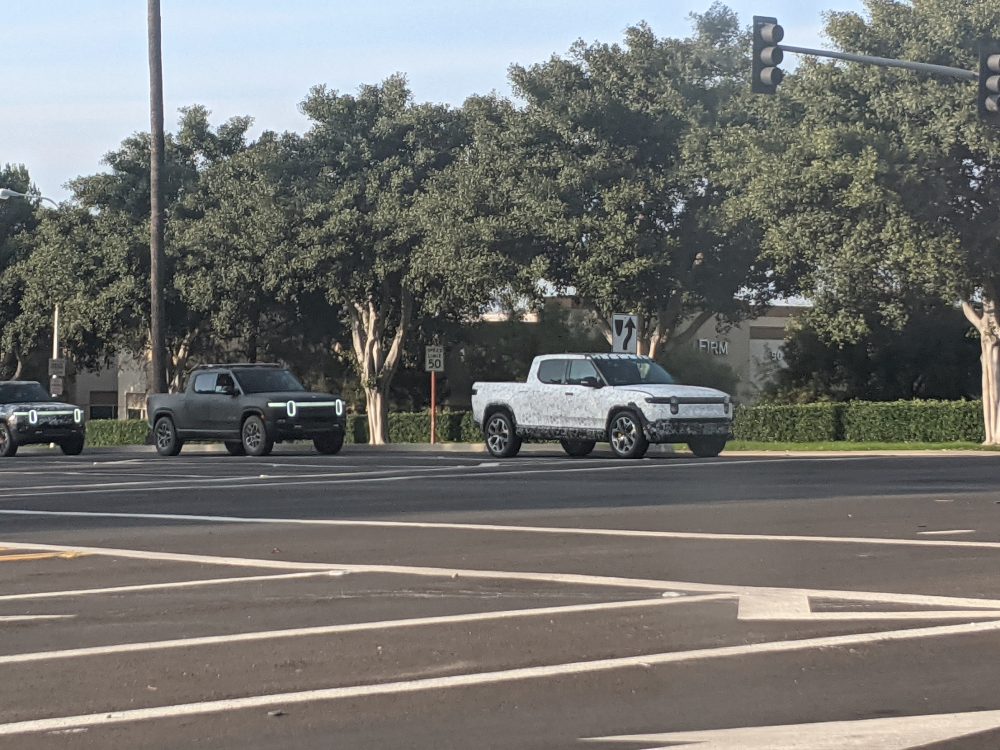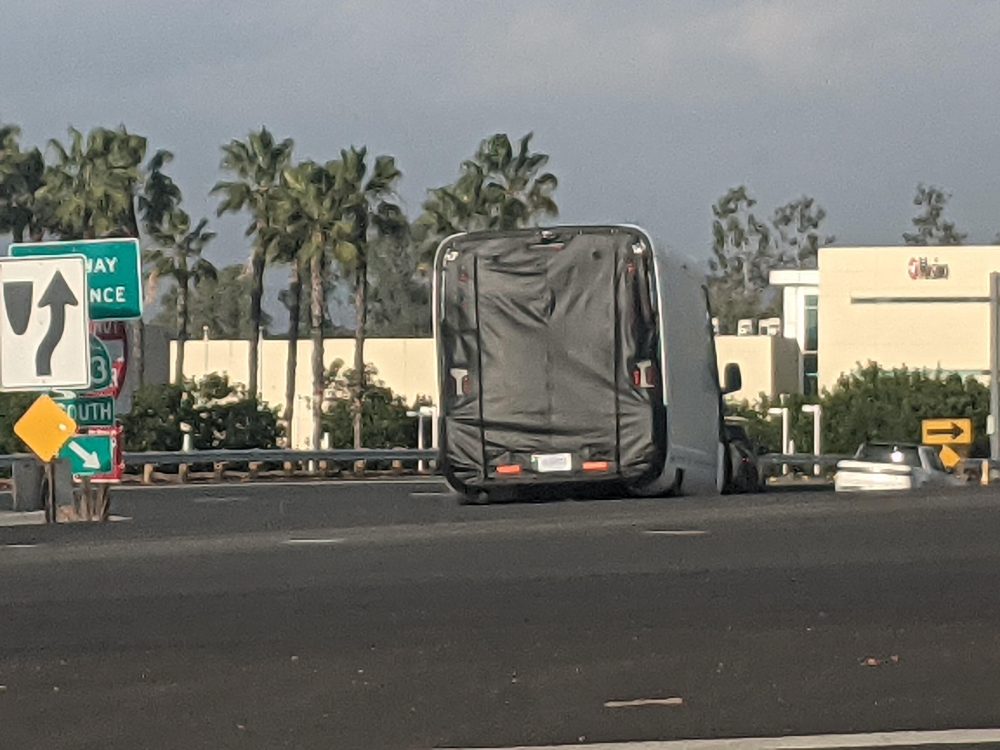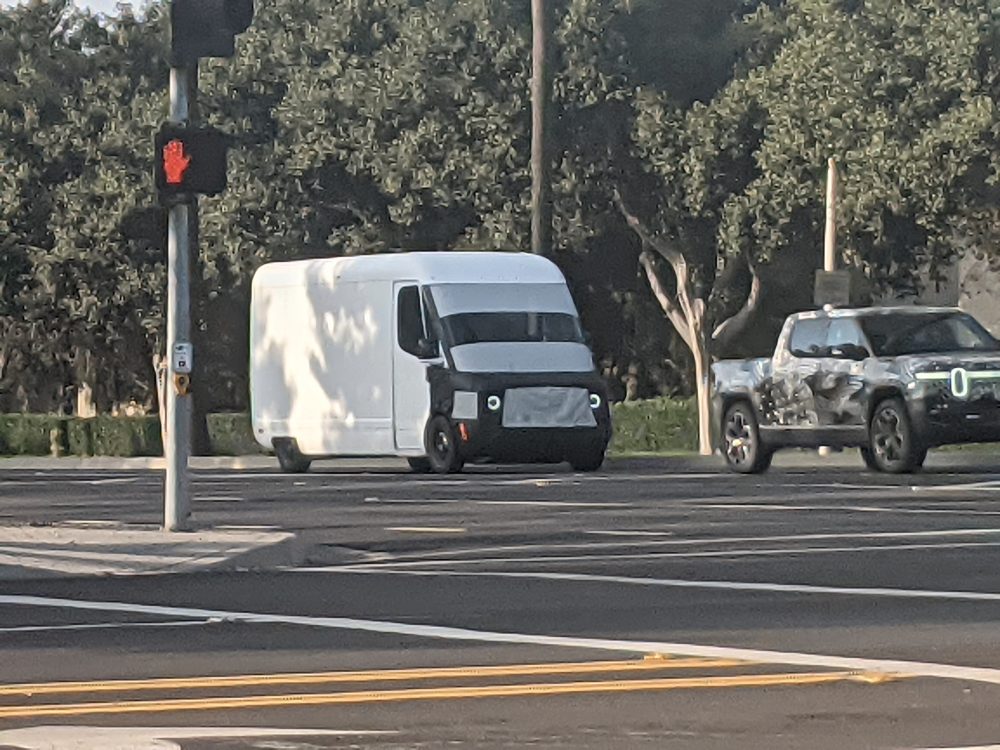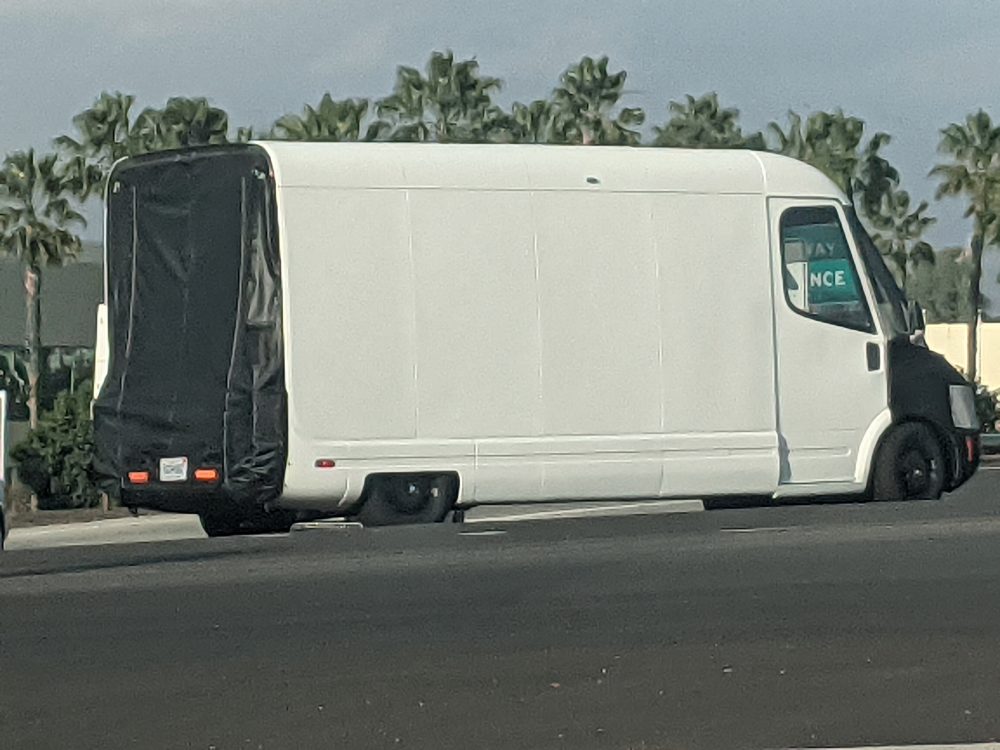Electric vehicle startup Rivian was seen testing its new delivery van this weekend in California, near the company’s in Irvine. After leading a $700 million funding round for Rivian, Amazon placed an order with the startup of 100,000 units of the delivery van back in September. An order that will become one of the largest deployment of electric vehicles in the world
Aside from its headquarters in Michigan and Chicago, Rivian has several operations in the Irvine area including a close to 20,000-square-foot facility which houses its battery team, among other departments.
In the photos captured we see a van accompanied by a few R1Ts, mostly covered in camouflaged. The van looks almost identical to the prototype we’ve seen from Rivian, but is lacking the traditional camouflage we are used to seeing on most prototype vehicles. However, the front and rear are pretty much completely covered.
In October, Rivian released photos of the van’s design concept fully uncovered. With the newly spotted prototype wearing some pretty heavy camoflouge on both ends, we are led to believe Rivian may not be done tweaking its design details. However, it could just be camouflaged to keep the mystery alive. Even the R1Ts that are seen alongside it, which have been fully revealed, are camouflaged, so you just never know.
One thing we are not able to see because of the camo is the vans branding logo. So far we have primarily seen Amazon’s logo grace the grille of the electric delivery van. Could this point to Rivian supplying the vehicles to other companies and in turn swapping the Amazon logo out for its own?
The pictures show the van notably low to the ground which could be part of the design to make it easier on delivery drivers who constantly hop in and out of their vehicles during their daily delivery routes. In addition, the lower ground clearance improves the vans aerodynamic and efficiency in the slightest thanks to the reduction of air turbulence. However, the low ground clearance could also mean that this particular unit may be carrying a full payload in order to complete different tests.

